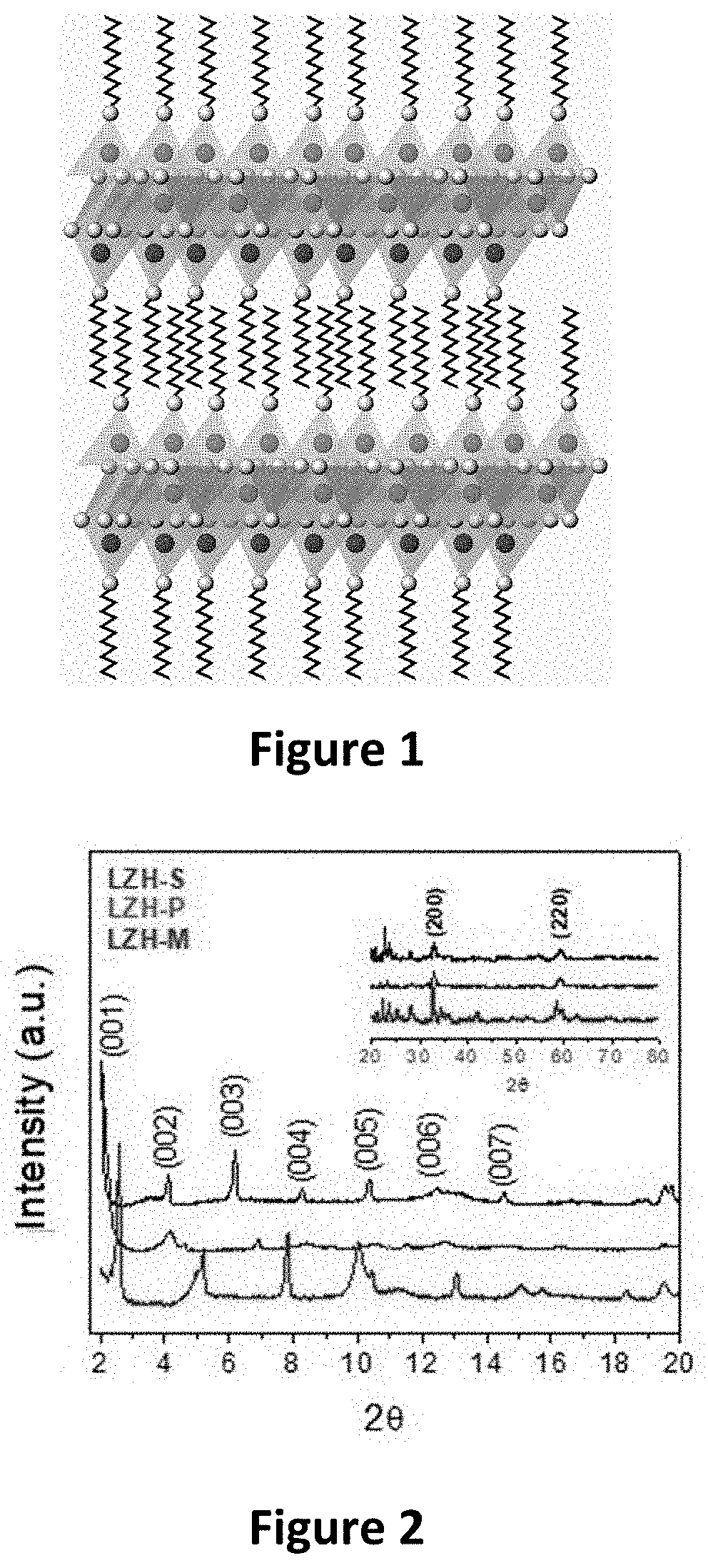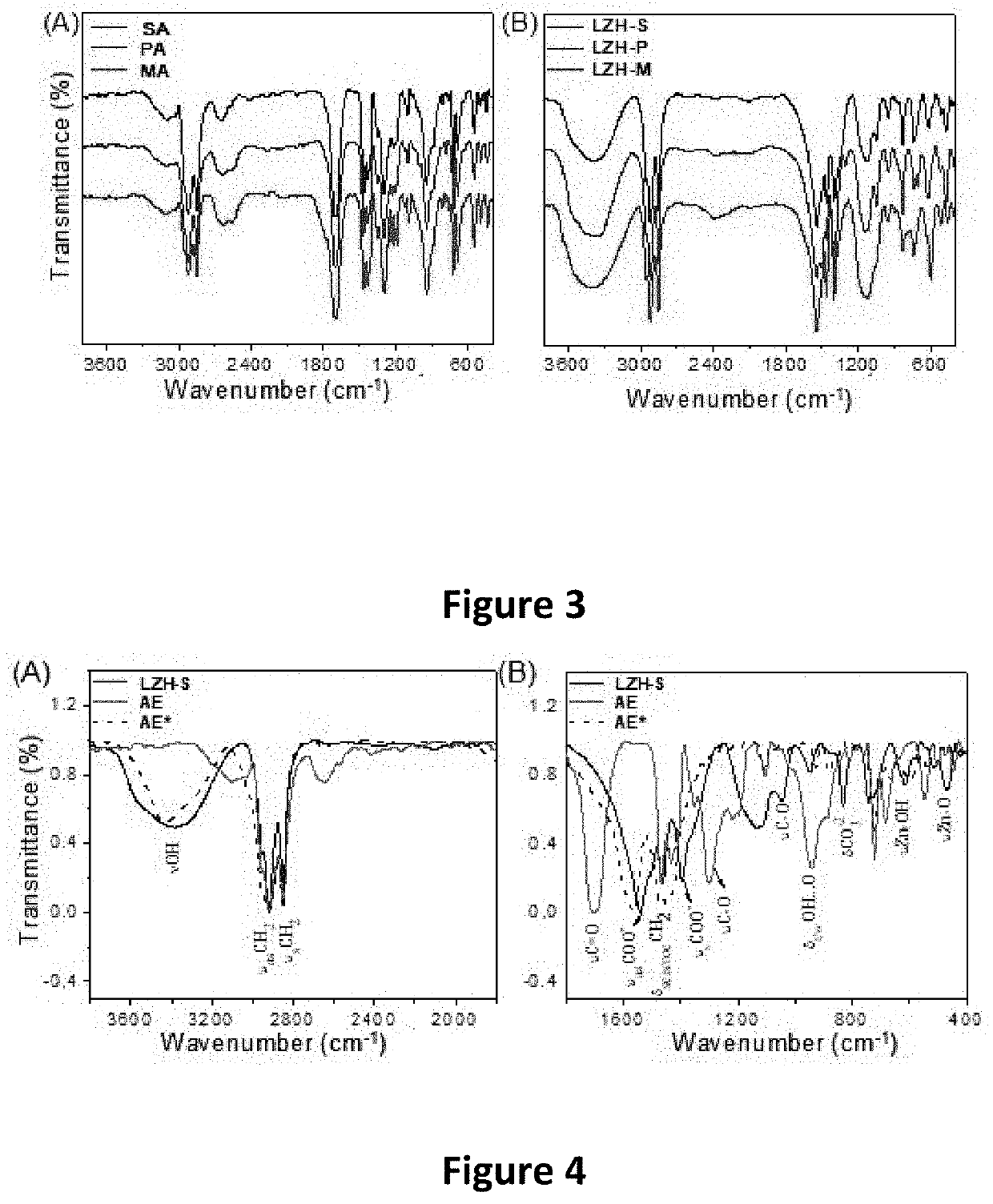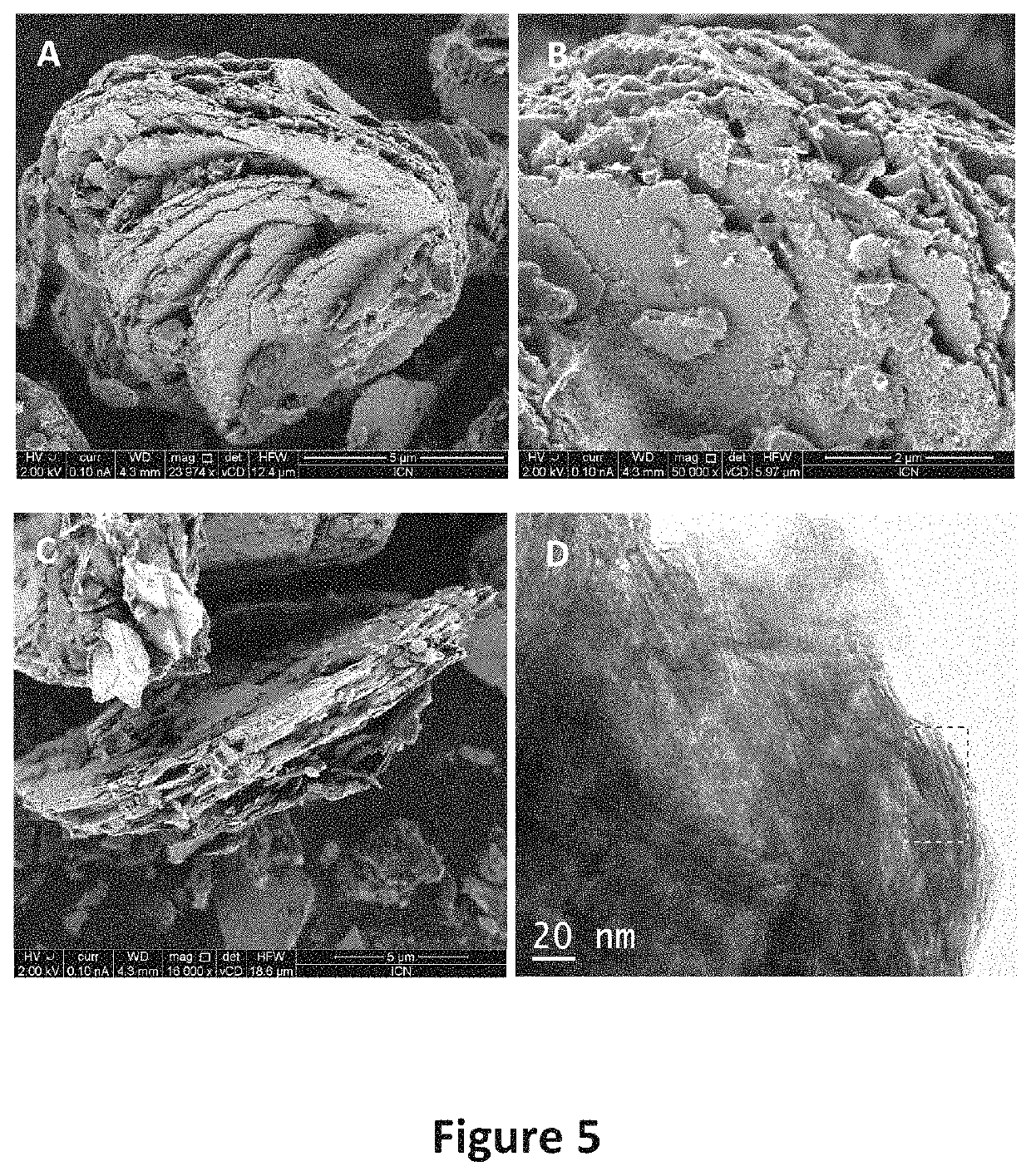Method for preparing laminar zinc hydroxide organic-inorganic nanocomposites for use in the removal and degradation of dyes from textile effluents
a technology of organicinorganic nanocomposites and laminar zinc hydroxide, which is applied in the direction of organic-compounds/hydrides/coordination complexes, physical/chemical process catalysts, metal/metal-oxide/metal-hydroxide catalysts, etc., can solve the problems of adsorption/degradation of dyes, not disclosed, etc., and achieves good photocatalytic mineralization, low cost, and high dye adsorption capacity
- Summary
- Abstract
- Description
- Claims
- Application Information
AI Technical Summary
Benefits of technology
Problems solved by technology
Method used
Image
Examples
example 1
Example of Obtaining Zinc Hydroxide-Myristic Acid Nanocomposite and Degradation of Methylene Blue
[0045]To 10.0 mL of an aqueous solution of 1.0 M zinc sulfate (ZnSO4) was dropwise added 5.0 mL of a 1.0 M sodium carbonate (Na2CO3) aqueous solution. A white suspension was immediately formed after addition. This was left under constant stirring at 600 rpm for 10 minutes at 55° C. Then, 10.0 mL of a 1.0 M sodium hydroxide (NaOH) aqueous solution was dropwise added until obtaining a suspension with pH equal to 9. The latter was left under constant stirring at 600 rpm for 10 minutes at the same temperature. In the final step, 5.0 mL of a previously prepared 0.4 M myristic acid solution was added using a 1:1 v / v water:acetone mixture as solvent, in a water bath. The resulting suspensions were left under constant stirring at 600 rpm for 48 h at 55° C. After that, suspensions were left standing for 24 h at room temperature. The obtained solids were separated by centrifugation at 6,000 rpm an...
example 2
Example of Obtaining Zinc Hydroxide-Stearic Acid Nanocomposite and Methyl Orange Degradation
[0052]To 10.0 mL of 1.0 M zinc sulfate (ZnSO4) aqueous solution was dropwise added 5.0 mL of a 1.0 M sodium carbonate (Na2CO3) aqueous solution. A white precipitate immediately formed after addition. The resulting suspension was left under constant stirring at 600 rpm for 10 minutes at 55° C. Then, 10.0 mL of a 1.0 M sodium hydroxide (NaOH) aqueous solution was dropwise added until obtaining a suspension with pH equal to 9. The latter was left under constant stirring at 600 rpm for 10 minutes at the same temperature. In the final step, 5.0 mL of a previously prepared 0.4 M stearic acid solution was added using a 1:1 v / v water:acetone mixture as solvent, in a water bath. The resulting suspensions were left under constant stirring at 600 rpm for 48 h at 55° C. After that, the suspensions were left standing for 24 h at room temperature. The obtained solids were separated by centrifugation at 6,0...
example 3
Example of Obtaining Zinc Hydroxide-Palmitic Acid Nanocomposite and Methylene Blue Degradation
[0055]To 10.0 mL of an aqueous solution of 1.0 M zinc sulfate (ZnSO4) was dropwise added 5.0 mL of a 1.0 M sodium carbonate (Na2CO3) aqueous solution. A white precipitate immediately formed after addition. The resulting suspension was left under constant stirring at 600 rpm for 10 minutes at 55° C. Then, 10.0 mL of a 1.0 M sodium hydroxide (NaOH) aqueous solution was dropwise added until obtaining a suspension with pH equal to 9. The latter was left under constant stirring at 600 rpm for 10 minutes at the same temperature. In the final step, 5.0 mL of the previously prepared 0.4 M palmitic acid solution was added using a 1:1 v / v water:acetone mixture as solvent, in a water bath. The resulting suspensions were left under constant stirring at 600 rpm for 48 h at 55° C. After that, the suspensions were left standing for 24 h at room temperature. The obtained solids were separated by centrifuga...
PUM
| Property | Measurement | Unit |
|---|---|---|
| molar concentration | aaaaa | aaaaa |
| temperature | aaaaa | aaaaa |
| molar concentration | aaaaa | aaaaa |
Abstract
Description
Claims
Application Information
 Login to View More
Login to View More - R&D
- Intellectual Property
- Life Sciences
- Materials
- Tech Scout
- Unparalleled Data Quality
- Higher Quality Content
- 60% Fewer Hallucinations
Browse by: Latest US Patents, China's latest patents, Technical Efficacy Thesaurus, Application Domain, Technology Topic, Popular Technical Reports.
© 2025 PatSnap. All rights reserved.Legal|Privacy policy|Modern Slavery Act Transparency Statement|Sitemap|About US| Contact US: help@patsnap.com



